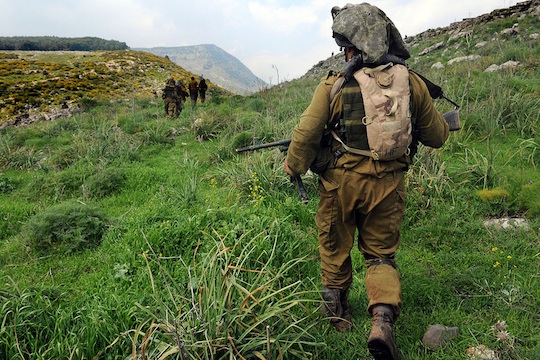If you’re going to publish ominous warnings portending the killing of scores of civilians, shouldn’t you verify the grounds and ask why?

In an article published on the New York Times website today, Israel sells the author, Isabel Kershner, the pretense for its next war: its claims that Hezbollah has dramatically beefed up its military infrastructure along Israel’s northern border.
Those claims on their own don’t come as much of a surprise. It’s been widely acknowledged that Hezbollah has increased its capabilities in southern Lebanon. Nor is the overt battle cry the most ominous part of the piece. What’s most concerning is Israel’s warning that since Hezbollah has embedded its facilities within southern Lebanese villages, all bets are off when it comes to their residents. They are now human shields, Israel says. “At the end of the day, it means that many, many Lebanese will be killed,” the piece quotes Yaakov Amidror, a former national security adviser, as saying.
That’s one of a number of warnings in the piece, which are quite chilling when taken in context. Israel killed more than 1,000 Lebanese during the 2006 Second Lebanese War. Its relentless air strikes destroyed extensive civilian infrastructure. Human Rights Watch later found that the strikes were indiscriminate, targeting civilian areas long after Hezbollah had left them. (Forty-four Israel civilians were killed in that war, along with 119 soldiers.) There’s little reason to believe the next round will be less bloody, and plenty of reason to believe it will be deeply familiar, or worse:
An Israeli expert familiar with military planning said that if Israel attacks Lebanon again, it would probably do so in three phases. First, it would strike without warning at targets that pose the greatest threat, he said; then it would call for civilians to evacuate southern Lebanon. Once a critical mass of people had left, ground troops would move in.
But beyond reminding readers of what we have to look forward to, it’s hard to understand why this piece was published. Its problems are manifold. It’s a government-packaged story with a bit of added background. It fails to recognize the irony of officials in their central Tel Aviv military headquarters lambasting Hezbollah for embedding among civilians. It doesn’t do much to substantiate the story it’s echoing. “The Israeli claims could not be independently verified,” Kershner (or her editor) writes.
If Israel is paving the way for another war, shouldn’t its claims be thoroughly, painstakingly investigated before they’re used as a pretense to kill hundreds or thousands of people?
It’s possible that Kershner indeed believes, as she indicates, that the story she was peddled could prevent the next war. But it’s as hard to imagine Hezbollah retreating from southern Lebanon as it is to believe it will proactively seek to add an Israeli front to its Syrian morass. It’s much easier to imagine a simmering buildup of tensions, a mounting of cross-border incidents, and, heaven help us, another bloodbath. Followed by a ceasefire. Repeat. Just like Gaza. Kershner doesn’t address or even allude to the wisdom of another military campaign – one that is, again, sure to end up empowering the Lebanese group, and one that all signs indicate it doesn’t want.
It certainly seems that Israel learned the wrong lesson from the most recent Gaza war. Instead of reexamining its rules of engagement, which turn civilians into fair game, it has chosen the tack of trying to preempt criticism of future carnage. “We told you this would happen,” they’ll be able to say.
With Israel’s war drums only getting steadier, that’s not so surprising. But is it the job of a New York Times journalist to give them her platform?


